Seasons – June 2023
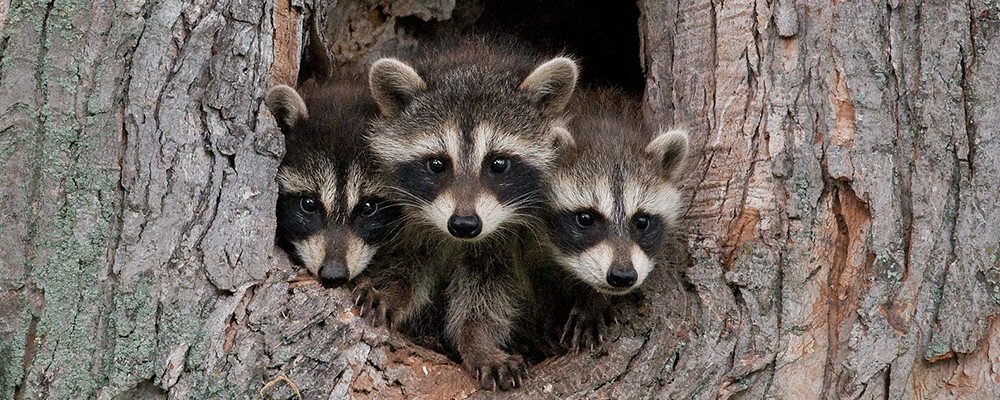
From the Plateau Land & Wildlife Management Team
While this spring has provided some much needed rain and wet weather, we know another hot Texas summer is on the way. As the kids start to get out of school and more of us begin to flock to our properties for some recreational downtime, remember, there are lots of fun activities that you can do on your property that also benefit your wildlife.
In this issue of Seasons, you’ll find articles about increasing water retention on your land, implementing supplemental water, methods to control brush, a checklist to ensure you are prepared for your summer management activities, news for Texas landowners, and more!
Be sure to stay safe and cool out there as temperatures rise, and as always, please feel to reach out if there’s anything we can do to help you protect, enhance or better enjoy your land.
Until next Seasons,
The Plateau Team

Table of Contents
Creative Ways To Increase Water Retention On Your Land
Summer Wildlife Management Checklist
Activity Reminder: Supplemental Water
Activity Reminder: Chemical Brush Management
News for Texas Landowners
Creative Ways To Increase Water Retention On Your Land
By Beyrl Armstrong, Co-Founder of Plateau Land & Wildlife Management
Water gives life to the natural world. Without water, soils become dirt, plants perish, and animals vanish. Other than water stored in lakes and rivers, rainfall is the only source of life-giving water.
In Texas, the amount of water that falls on a particular piece of property varies greatly depending upon its geographic location. The Piney Woods of East Texas can receive 50-60 inches of rain in a year while the deserts of West Texas can barely count on 8-10 inches of annual rainfall. Annual rainfall in the rest of Texas falls between these two extremes. The amount of water that is available through rainfall on any given piece of property can be referred to as the “water budget” of that property. In order for landowners to establish what the water budget is on their property, they need to first understand where their property lies geographically in Texas. The map below, created by the Texas Water Development Board, illustrates the average yearly rainfall by county in Texas.
Once the amount of rainfall (the “income” in the water budget) is determined, then a landowner can begin to plan for the best way to manage that budget.
Considerations for Water Retention 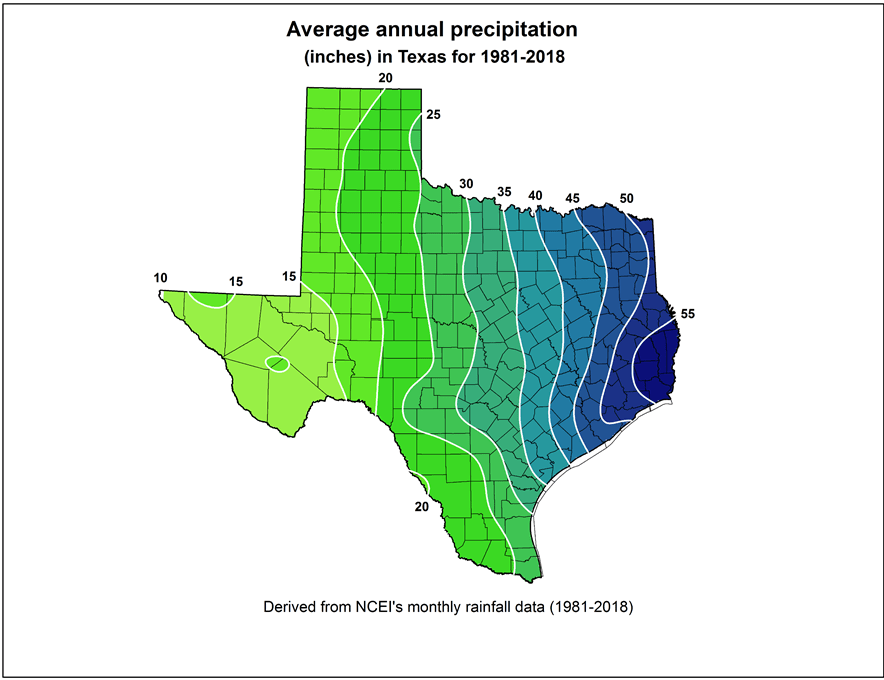
Like all budgets, the income must be balanced against expenses. Savings accounts should be developed to protect against variances in income and increases in expenses. In order to devise an effective water budget, it is important to understand the things that affect the amount of water that can be retained from the original rainfall input. These “expenses” are:
- Evaporation – the return of water to the atmosphere from the surface of leaves, bare ground, water bodies, and impervious surfaces (roofs, roads, etc.).
- Transpiration – the exhausting of moisture from plants and animals.
- Interception – plant cover that does not allow for rainfall to reach the ground and is a source of both evaporation and transpiration.
- Runoff – the flow of water across the surface of the land.
Water retention can be considered the “savings account” in the water budget. Water can be retained in ponds and lakes, wetlands and marshes, moist soils, and, ultimately, by infiltration that may eventually recharge aquifers for underground storage.
Things to consider when managing land to maximize the retention of water are:
- Local climate – humidity levels affect evaporation rates.
- Aspect – the relationship of a property to the sun, i.e., west, and south-facing slopes have a higher evaporation rate and are drier than east, and north-facing slopes.
- Slope angle – steep slopes can allow for more runoff and less infiltration.
- Impervious cover – exposed rock, hardened soils, roads, and rooftops.
- Plant Cover – density and types of plants that are located on the property.
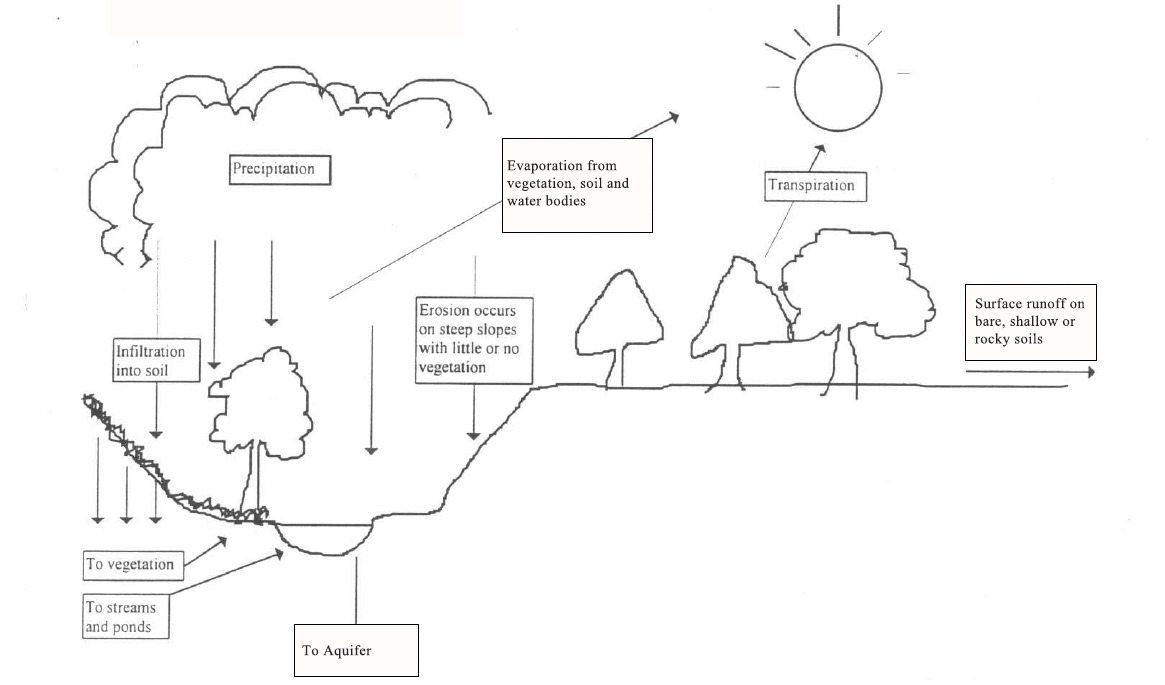
The illustration above shows how the “Water Cycle” works. Inputs from rain are balanced against evaporation, transpiration, runoff, infiltration, and recharge.
Now that the planning parameters have been established, it’s time to come up with a water budget for a sample piece of property:
Let us say that a landowner has a 60-acre piece of property located in Blanco County. The terrain is rolling hills with an intermittent creek flowing through the middle of it. Along the creek are flat, deep-soiled “benches”. Most of the hills are south facing and the hilltops have very shallow, rocky soil. According to the map above, the average rainfall for the area is 30-35 inches per year. The climate is moderately humid.
In order to maximize water retention on the property, the best approach would be to increase infiltration by slowing the flow of water across the deep soil areas along the creek and on the hilltops and decreasing runoff from the hills intercepting rainfall on the steeper slopes. The runoff of water in the intermittent creek could be decreased during high volume rain events by the establishment of trees and woody shrubs within and along the banks of the creek.
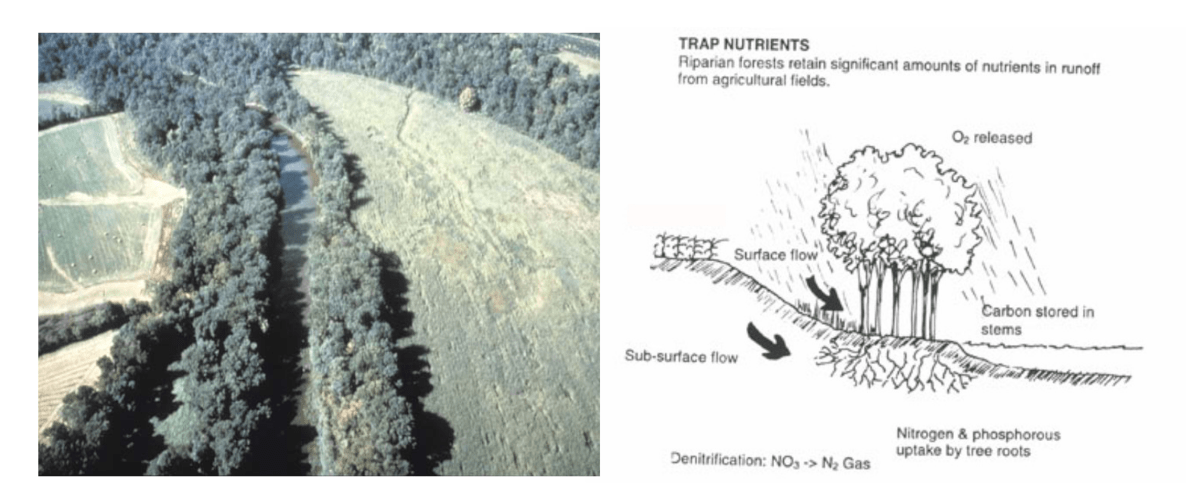
Photo and graphic provided by the Natural Resources Conservation Service. On the left shows a riparian corridor with trees along the banks to slow the surface flow of water. On the right shows how nutrients are trapped in the ground when you slow surface flow.
With these management parameters in mind, how would the landowner actively manage the property to achieve these goals?
- Reducing grazing pressure on the hilltops and creek sides would allow for tall grasses to grow, slowing the flow of water across the land, thereby improving infiltration.
- Planting a diverse blend of native grasses and perennial forbs (wildflowers) could help speed up infiltration.
- Allowing trees and shrubby plants to grow on the steep slopes would increase interception of heavy rainfall and allow it to slowly move through the leafy vegetation and be absorbed in the ground beneath the woodlands. Some water, captured by the bark and leaves of the trees would be infiltrated into the soils through stem flow within the trunks of the trees. Evaporation rates would be reduced by the increased shade provided by the woodlands on the slopes and the tall grasses covering the shallow soils on the hilltops.
- The planting and natural recruitment of trees and woody plants along and within the banks of the creek would both provide shade to reduce evaporation of any standing water in the creek and, with the presence of roots and trunks, slow water flow during heavy rains and facilitate the development of gravel beds that would act as small dams, creating more permanent pools of water within the creek bed.
Once these practices are established, periodic management of the grasslands by short-term grazing, mowing, and/or the application of prescribed fire will be needed to maintain them. The wooded areas will be self-tending.
These management practices not only help increase the infiltration and retention of water, but they also provide habitat for wildlife and are aesthetically pleasing. It takes patience for landowners to manage their land to slowly become a natural sponge. Planting native grasses can be expensive and natural recruitment of woody plants takes time. However, the benefits to the water budget, wildlife, and the pride of ownership make these management practices very much worthwhile.
Have questions about improving the water retention on your land? Please contact us at [email protected] or (512) 894-3479.
Summer Wildlife Management Checklist
By Kameron Bain, Landowner Account Manager
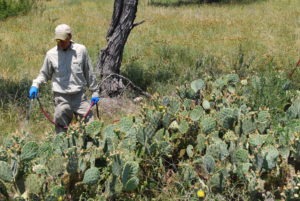
Plateau Land & Wildlife Technicians conducting chemical brush control by treating prickly pear cactus.
Prepare for summer heat and plan ahead to stay on top of your Wildlife Management
Ella Fitzgerald sang that it’s “summertime and livin’ is easy” and it definitely seems that way sometimes. No school, long days, beach vacations – all of these things can make it difficult to focus on your wildlife management plan and activities.
While you are having some fun in the sun, we encourage you to take advantage of those long summer days to meet one (or maybe even two) of your wildlife management activities. There are plenty of options to choose from this time of year, including:
- – Chemical brush control
- – Enroll in Managed Lands Deer Program (MLDP) harvest option: May 1 – September 1
- – Protein feeding for deer
- – Deer surveys: Start in August
- – Feral pig control
- – Pond construction or repair
- – Imported red fire ant control
- – Strip mowing: Late July and August
- – Half-cutting mesquite
- – Supplemental water maintenance
- – Camera surveys at water sources
There are plenty of timely activities to choose from, and of course, Plateau is always here to help when you need us.
To schedule a service for your property, contact us at [email protected] or (512) 894-3479.
Activity Reminder: Supplemental Water
By Kameron Bain, Landowner Account Manager
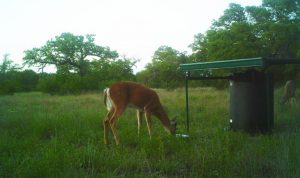
A whitetail doe enjoys a drink from a Plateau Land & Wildlife 100 Gallon Water Table.
Water is good for every target species, from pollinators like butterflies and bees to larger animals like Wild Turkey and deer. Wildlife can acquire water through three sources: free water, food, and metabolic water. Free water is any water wildlife may drink – from dew to puddles, to a flowing creek. Food provides water in varying amounts, e.g. a fresh grasshopper or fruit provides more water than dried seeds or twigs. Metabolic water is water created inside the body as a by-product of cellular respiration, and many species rely heavily on this source, particularly in arid environments.
The wildlife water source landowners can have the most direct, year-round impact on is free water. Good land management helps reduce runoff and puts water into our aquifers, where it may come up as springs to feed our creeks and rivers. Healthy wetlands and riparian habitats alongside streams help store water for more reliable flows.
Both spring enhancement and wetland creation qualify under Supplemental Water. Note that while these are natural water sources, there is an activity in the enhancement or creation. In contrast, having an existing stock tank or pond that is filled by runoff requires no activity on your part, so it does not qualify under Supplemental Water. Constructing a new pond or repairing or enhancing an existing one can qualify under other categories.
For areas on your property that have no natural water, providing artificial water sources through an existing well or livestock trough makes for an easy activity. Setting troughs at ground-level or building a ramp from rocks, wood, or hog panel makes any source wildlife-friendly. Be sure to run it from the inside-bottom, over the edge, and down to the ground outside to grant access to small wildlife and keep them safe from drowning. If you need a new trough, keep in mind that small troughs or pans lose less water to evaporation and cost less than larger livestock troughs.
That’s why we use metal dog pans on our water tables, which is another option for providing water in dry places. No well, no problem. Catch rain on a roof and store it in a cistern or water tank connected to a small pan or trough. This can be particularly good for improving water distribution on your property. Ideally, you should provide a source of free water every quarter to a half-mile across your property, though bigger properties managing for large animals such as deer or Wild Turkey can spread them out farther.
Take new pictures each year of your water sources or water-related activities for your records and annual report.
What qualifies?
- Rainwater collection systems like Plateau’s Water Tables and Quail & Small Wildlife Feeding and Drinking Station
- Modified livestock troughs with wildlife-friendly ramps offering safe access for target species – these may be filled automatically or manually as long as the water is reliable
- Well or windmill flow into artificial or earthen holding tanks at ground-level
- Natural spring enhancement/development
What does not qualify?
- Man-made lakes and ponds supplied only by overland flow or natural springs
- Rivers, creeks, streams, etc. that are natural sources (not a supplement but they are great for wildlife)
For questions about your supplemental water activity, or if interested in purchasing a Plateau Water Table or Wildlife Station contact us at [email protected] or (512) 894-3479
Activity Reminder: Chemical Brush Management
By Kameron Bain, Landowner Account Manager
Timing is (almost) everything in chemical control of brush.
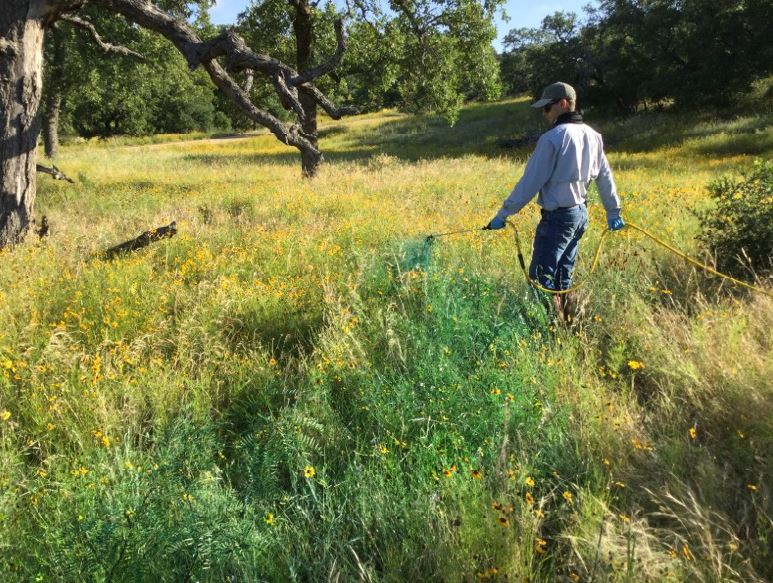 The right tool is essential to a job well done. Many brush species simply do not respond to mechanical treatments like mulching, shredding, bulldozing, or cutting. Mesquite just gets “angry” when you cut off the plant above ground, coming back with many sprouting stems to replace the one you removed. Prickly pear problems can be made even worse because the scattered pieces of plant can sprout new cactus, multiplying your problem.
The right tool is essential to a job well done. Many brush species simply do not respond to mechanical treatments like mulching, shredding, bulldozing, or cutting. Mesquite just gets “angry” when you cut off the plant above ground, coming back with many sprouting stems to replace the one you removed. Prickly pear problems can be made even worse because the scattered pieces of plant can sprout new cactus, multiplying your problem.
Herbicides are often the most efficient and effective way to control common brush species like these, but the right herbicide and the right timing are key to success. Foliar applications (applying herbicides to the leaves) are especially sensitive to timing. This is because the plant must take in and move the herbicide to the roots to prevent resprouting. If the plant isn’t in a receptive time of year, you can do some damage on top, but it will recover and regrow next year.
If you hit the right window and use the proper herbicide, you can expect to kill >75% of treated mesquite plants. A one-time application of the right herbicide on prickly pear can produce very visible results in only a few months with up to 85% control within 18-24 months. While prickly pear is less time-sensitive than others, if the timing is right, high control rates can be obtained even sooner.
How do I do it?
Deciding how and when to treat brush with herbicides depends on a lot of factors – brush species, growth form, growth stage, season, density, etc. Even soil type can affect the effectiveness of some herbicides. The Texas A&M Agrilife Extension Brush Busters website is a great resource for do-it-yourself chemical control information. Keep in mind that following herbicide label directions is essential and some herbicides will require a Pesticide Applicator’s license to purchase and use. Plateau maintains a Commercial Pesticide Applicator’s license to assist landowners without a private license.
When can chemical control be applied?
Most herbicide applications should be applied sometime during the growing season (Spring through Fall), even when using less time-sensitive methods like stem spraying. Knowing your target plant is key, however, as leaf spraying for mesquite must happen during the summer when leaves turn from light to dark green, while huisache is best treated in the fall. If you plan to conduct chemical control this year, now is the time to get ready.
Plateau advocates thoughtful removal of native brush species because it is important to realize that almost all species of brush (no matter how weedy, prickly, or annoying) have some value to wildlife as food, cover, or both. Any herbicide must be used with caution to avoid damage to desirable, non-target species. Remember that brush management for wildlife often involves the selective removal of individual plants to increase the production of desirable grasses, forbs, and other shrubs.
For questions about your chemical control and/or brush management activities, or if interested in a Plateau Brush Management Plan contact us at [email protected] or (512) 894-3479.
News for Texas Landowners
Texas Parks and Wildlife Department opts for eminent domain to save Fairfield Lake State Park
BY WILLIAM MELHADO for The Texas Tribune
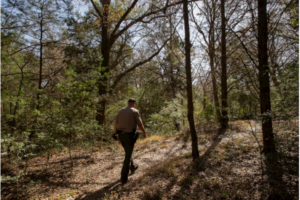
The Texas Parks and Wildlife Department voted unanimously to use eminent domain to seize a 5,000-acre property south of Dallas that included Fairfield Lake State Park on Saturday, citing the need to preserve a state park enjoyed by thousands of Texans.
After months of stalled legislative efforts and failed negotiations to secure the park, the state opted to seize the land from Todd Interests, a Dallas-based developer, who purchased the property in February for $110.5 million. Commissioners were not eager to use the power of eminent domain to condemn the property, but the agency ultimately decided this instance was an exceptional case of public interest.
Jessica Domel for Texas Farm Bureau
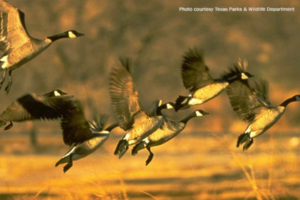
There are new opportunities for Texas farmers and ranchers who are interested in preserving and improving habitat for migratory birds and waterfowl. The U.S. Department of Agriculture’s Natural Resources Conservation Service (NRCS) is now accepting applications for funding through the Migratory Bird Resurgence Initiative. “It’s an initiative under our Environmental Quality Incentives Program. The purpose of it is to provide technical and financial assistance to producers,” Charles Kneuper, state resource conservationist, said. “ It’s aimed at preserving, protecting and improving habitat for migratory waterfowl, shorebirds…
By Tiffany Dowell Lashmet for Ag Law Blog

The United States Supreme Court has issued its Opinion in Sackett v. EPA, a case looking at the proper test to determine whether a wetland is jurisdictional under the Clean Water Act (CWA). The Court unanimously agreed the “significant nexus” test is not the proper way to determine whether wetlands constitute a WOTUS. The Court also unanimously agreed the Sacketts’ property is not a WOTUS. Thus, the decision from the US Court of Appeals for the Ninth Circuit was reversed. However, the Justices did not agree on the proper test to determine whether “adjacent” wetlands are jurisdictional. The five-Justice majority held CWA jurisdiction extends only to wetlands that are “as a practical matter indistinguishable from waters of the United States…”
By Aimee Levitt for Texas Monthly
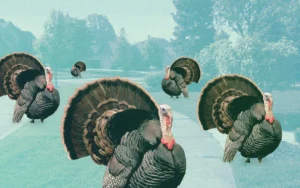
For as long as anyone can remember, the flock of wild Rio Grande turkeys that live in Sun City, a sprawling 55-and-over community in Georgetown, had coexisted peacefully with the retirees. The turkeys mostly stayed in the greenways and wooded areas around Berry Creek, while the humans stayed in their homes and on the golf courses. The two groups met only on the hiking trails, where the humans might marvel at the turkeys’ iridescent feathers, long red wattles, and funky head-bobbing struts before the birds would trot away in a flurry of tail feathers. Or maybe the turkeys were just lulling the seniors into a false sense of security. Last summer a few young male gobblers left the greenways and took to promenading in pairs through the streets of Sun City.
Bird makes ‘rare’ appearance in Galveston for first time since 1982
Priscilla Aguirre for My San Antonio
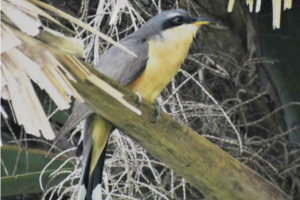
Radar captures image of Waugh Bridge bat colony’s emergence
Houston Chronicle
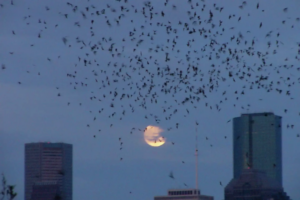
Caldwell County Announces Feral Hog Bounty Collection Dates
Lockhart Post Register
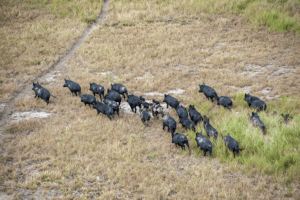
Caldwell County’s citizens are once again being invited to help keep the feral hog population under control.
The Central Texas Feral Hog Task Force is a collaborative regional effort to track and abate the extensive ecological and economic damage associated with invasive feral swine. Texas is home to an estimated 2.6 million feral hogs with an impact that may exceed $500 million annually. The task force was established in 2013 as the Caldwell County Feral Hog Task Force but was renamed the Central Texas Feral Hog Task Force in 2018. Feral Hog abatement plans for 2023 include the hog bounty program, landowner virtual and face-to-face workshops/webinars, and the random awarding of trapping and game camera equipment to landowners. For bounty collection, bring tails from harvested animals…
Grimes and Waller are hosting a New and Small Landowners Series
by AgriLife
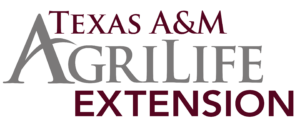
Grimes and Waller are hosting a New and Small Landowners Series starting on June 28th in Grimes county. This program is targeted towards new and small landowners with 30 acres or less. Session 1 will cover Local Agriculture Resources; the second session will discuss Aquaponics; the third session will cover Wildlife Habitat Management. Classes run from 6:00 – 7:30pm. Registration is $20 per class, and includes a meal. Register for one or all 3 events.
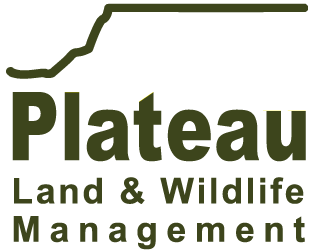




Sorry, the comment form is closed at this time.